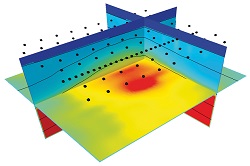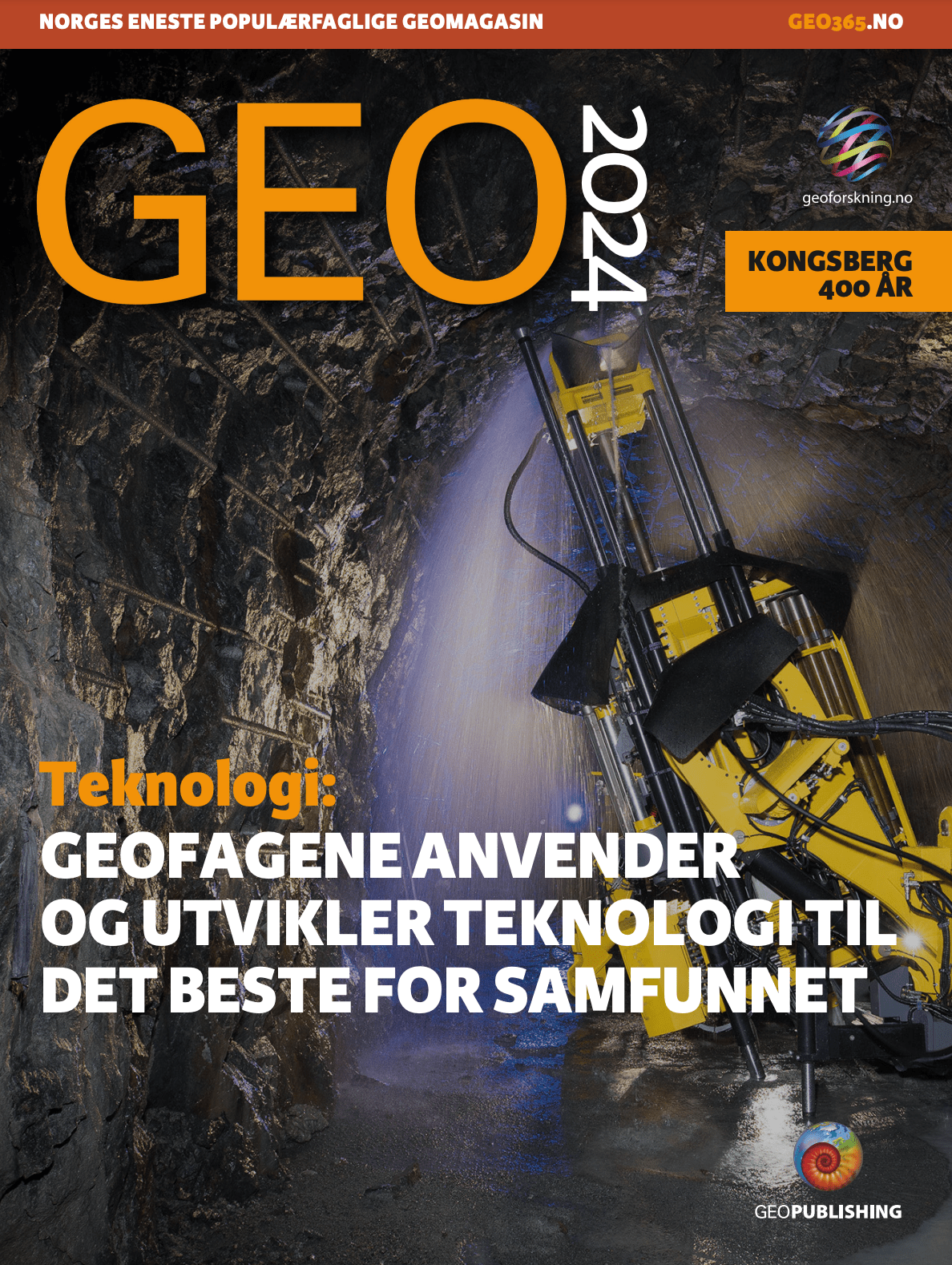 3D anisotropic inversion of EM data
3D anisotropic inversion of EM data
It was four years ago NGF (the Norwegian Geological Society) held its first international CSEM conference.
This year’s conference brings together some of the best minds in EM from all around the world. At the time of writing this includes 19 oil companies, 13 service providers, universities and technical institutions, as well as a publishing company!
There have been numerous new breakthroughs since the last time CSEM conference delegates convened in 2009. The most obvious and important EM breakthrough is the transition from 2D to 3D. 3D inversion constructs 3D vertical and horizontal resistivity cubes by taking full advantage of 3D wide azimuth data. The cubes come in SEGY format and can be loaded directly into workstations where they can be jointly interpreted with seismic.
For oil- and gas companies this has meant going from MVO plots to 3D anisotropic cubes, strengthening the predictive power of EM. For a company like PEMEX exploring in the Gulf of Mexico, 3D EM results have been used with success.
Today’s 3D CSEM modeling and inversion applications have to tackle problems at an unprecedented scale. Indeed, the transition from 2D to 3D came with a huge increase in data volumes, which challenged existing software and hardware solutions.
The EM industry has met the challenge by making significant improvements in processing power and speed.
Multi-client projects carried out in the Barents Sea and off-coast Brazil have resulted in 3D EM data acquired in large areas. And multi-client data has now assumed a larger place in the EM market. EM providers have calibrated Barents Sea data with well data, and the results give reliable and impressive statistics. Moreover, volumetric estimates have been performed for known discoveries. This opens up for resource estimates based on new, regional maps of inverted 3D data including stratigraphic traps.
Near-future exploration in the Barents Sea has been a hot topic in Norway, and the current Norwegian government will open the southeast Barents Sea up for petroleum activity. It will be the first time since 1994 that the government has introduced a new area for petroleum exploration. This will provide new opportunities to demonstrate the benefits of integrating CSEM with 2D seismic data in an almost unexplored area. Based on earlier experience from the Barents Sea, this combination of tools may give better and quicker information of present resources.
Another important breakthrough is the combining of CSEM and MT to map structures defined by salt and basalt. Such a combination has been proposed by the academic community for more than a decade. However, it is only within the last few years that this idea has become a commercial success, mainly due to better equipment, 3D MT inversion and new, joint inversion algorithms. MT requires both electric- and magnetic measurements, and these must be recorded by mechanically stable receivers on the seafloor.
On the equipment side, CSEM acquisition in shallow water can now be performed with high-power sources. With control systems placed on the survey vessel, and only electrodes in the water, one can reap the benefits of having the source suspended from surface buoys, while delivering up to 7200 Amps at 12 Hz bandwidth.
For deep water projects up to 3600 meters, technology now exists which delivers broadband signatures up to 1500 Amps and 10 Hz.
A focus on health, safety and environment are fundamental to the EM industry. That’s why EM service providers have dissolvable anchors, good cooperation with authorities, and a strong focus on preventive safety measures on board their vessels. There have also been discussions about environmental effects of sending electromagnetic fields out into the ocean. However, research (LGL Report SA937 and Buchanan et al) concluded that there are no negative significant residual effects predicted to result from CSEM surveys.
Trondheim, Norway is in a favorable position in that academic and commercial centers of EM excellence exist there. In addition to Statoil’s R&D center and service-provider EMGS being situated there, the city is home to the Norwegian University of Science and Technology (NTNU). With professors like Bjørn Ursin, Ståle Johansen, Børge Arntsen and Martin Landrø (who incidentally is speaker at this year’s conference), NTNU is arguably one of the best places in the world to study and conduct research around modeling, inversion and interpretation of seismic and electromagnetic data. The Department of Petroleum Engineering and Applied Geophysics recently expanded its EM offerings by establishing a new part-time professorate in EM.
Since the Norwegian Geological Society’s last CSEM conference in 2009, EM has secured firm footing in the exploration business as an add-on to seismic. The commercial breakthroughs and growing research activity in EM almost begs the question “Why not host an annual CSEM conference?”



